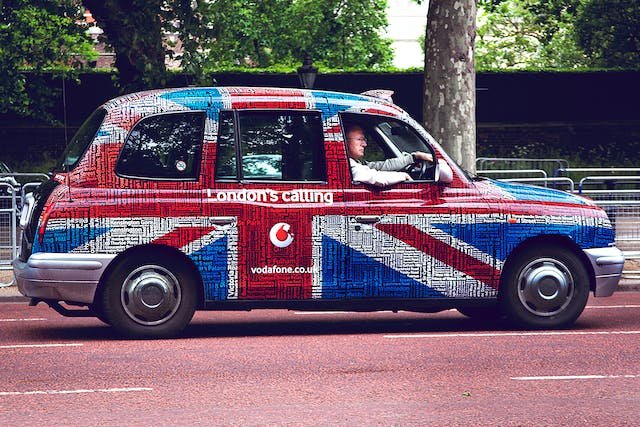The history of taxi is a fascinating journey that mirrors the evolution of transportation and societal needs. From humble beginnings to modern, app-based ridesharing services, taxis have played a pivotal role in shaping urban mobility. This exploration delves into the roots of taxis, their transformation over the years, and the impact they’ve had on our daily lives.
THE BIRTH OF TAXIS
The concept of taxis dates back to the 17th century in London, where horse-drawn carriages were available for hire. These early taxis were not standardized, and anyone with a horse and carriage could offer transportation services. The term “taxi” itself is derived from the Latin word “taxa,” meaning charge or tax, reflecting the fare system employed.
THE HANSOM CAB ERA
In the 19th century, the Hansom cab emerged as a significant innovation in taxi design. Invented by Joseph Hansom in 1834, these two-wheeled, horse-drawn vehicles were more maneuverable and efficient than their predecessors. The design featured a driver’s seat elevated at the rear, allowing for better visibility and control. This marked the beginning of a more organized and regulated taxi industry.
THE RISE OF THE YELLOW CAB
The iconic yellow cab made its debut in Chicago in the early 20th century. Albert Rockwell, founder of the Yellow Taxicab Company, chose the color yellow based on a study that suggested it was the most visible color from a distance. This distinctive hue soon became synonymous with taxis and was adopted by taxi companies worldwide. The introduction of standardized colors contributed to the professionalization of the taxi industry.
THE CHECKER TAXI
The Checker Taxis, with its unmistakable black-and-white checkerboard pattern, became a symbol of taxis in the mid-20th century. Produced by the Checker Motors Corporation, these durable and spacious vehicles became ubiquitous on the streets of American cities. The Checker Taxi’s boxy design and roomy interior made it a popular choice for both drivers and passengers.
RADIO DISPATCH AND THE BIRTH OF UBER
The 20th century also saw the advent of radio dispatch systems, allowing for more efficient taxi services. Dispatchers could assign the nearest available taxis to a pick-up location, reducing wait times for passengers. However, the most significant disruption to the taxi industry came in the 21st century with the rise of ride-hailing platforms like Uber and Lyft.
DIGITAL DISRUPTION
Uber, founded in 2009, revolutionized the taxi industry by introducing a digital platform connecting riders with drivers. The convenience of hailing a ride with a few taps on a smartphone app transformed the way people viewed transportation. This digital disruption sparked debates about regulation, safety, and the traditional taxi model’s viability.
REGULATORY CHALLENGES
The rapid rise of ride-hailing services led to regulatory challenges and disputes with traditional taxi operators. Established taxi industries, accustomed to a structured and regulated environment, faced competition from tech-driven platforms that often operated in a legal gray area. Cities around the world grappled with how to regulate and integrate these new services into existing transportation frameworks.
INNOVATION AND ADAPTATION
To compete with ride-hailing services, traditional taxi companies began embracing technology. Many adopted mobile apps for booking rides, GPS navigation, and cashless payment systems. These innovations aimed to enhance the customer experience and keep pace with the evolving demands of modern urban life.
ENVIRONMENTAL CONCERNS AND ELECTRIC TAXIS
As environmental awareness grew, the taxi industry faced pressure to address its ecological footprint. Electric taxis emerged as a sustainable alternative, with cities promoting the adoption of electric vehicles to reduce emissions. Companies like Tesla and Nissan introduced electric taxi models, contributing to a greener and more sustainable transportation future.
THE FUTURE OF TAXIS
Looking ahead, the taxi industry continues to undergo transformations driven by technology, environmental considerations, and changing consumer preferences. Autonomous vehicles, already in the testing phase, pose both challenges and opportunities for taxis. The integration of artificial intelligence and self-driving technology could reshape the industry’s landscape, potentially altering the role of human drivers.
The history of taxis is a testament to the ever-changing dynamics of transportation and urban life. From horse-drawn carriages to app-based ridesharing, taxis have adapted to societal needs, technological advancements, and regulatory frameworks. As we celebrate the rich history of taxis on their 1-year birthday, we reflect on the journey that brought us to the present and anticipate the exciting possibilities that lie ahead in the world of transportation.
Optimal convenience meets reliability. Your premier choice for hassle-free one-way journeys. With a fleet of top-notch vehicles and exceptional service, Mango Call Taxi ensures a smooth and comfortable travel experience. Your destination, our commitment.
For a free estimate, visit our website at www.mangocalltaxi.com. To book or inquire, reach us at calltaximail@gmail.com or call +91 7667 325 325.

